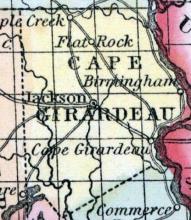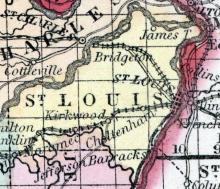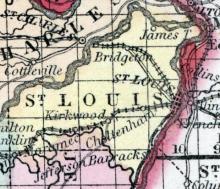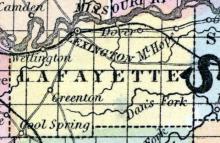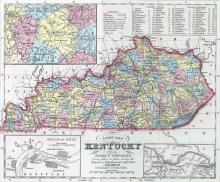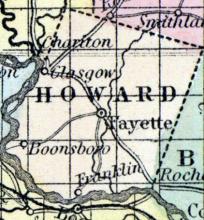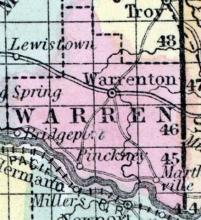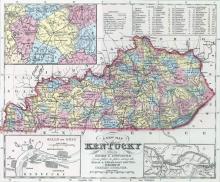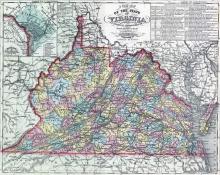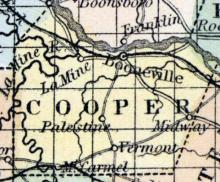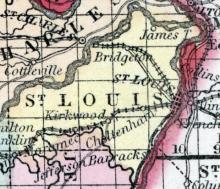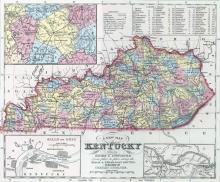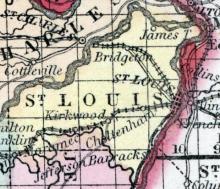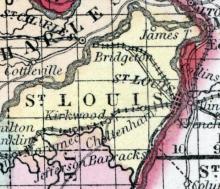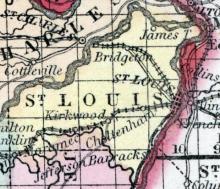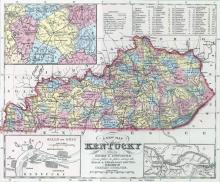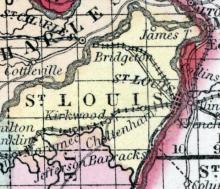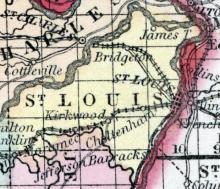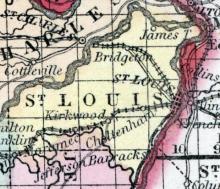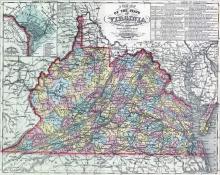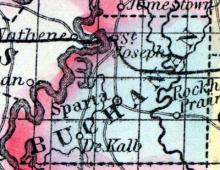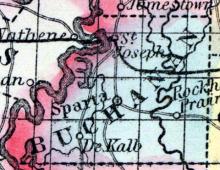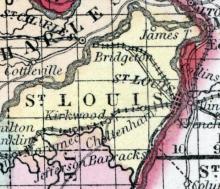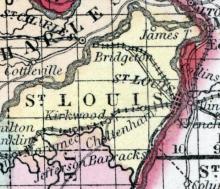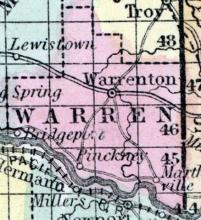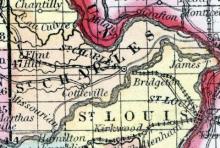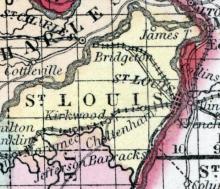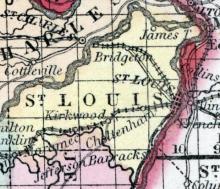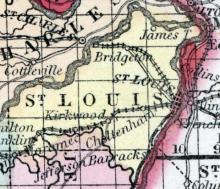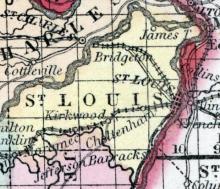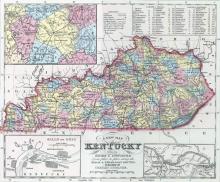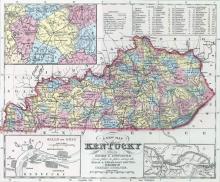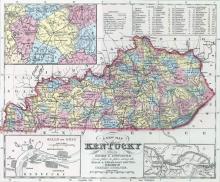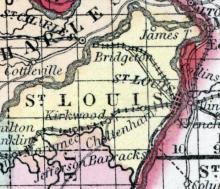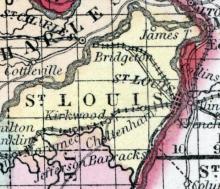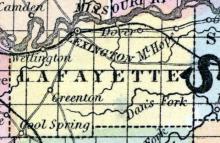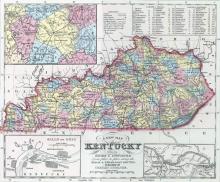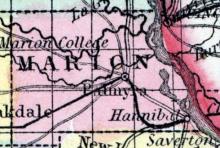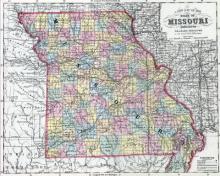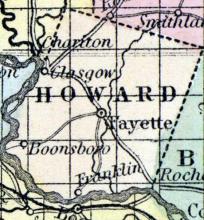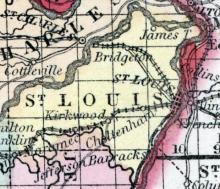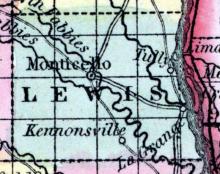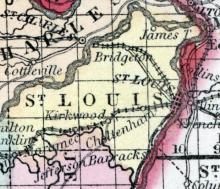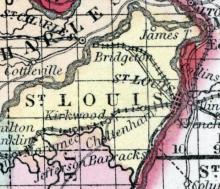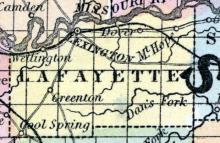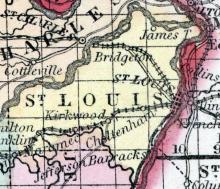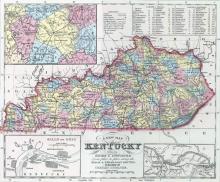In Cape Girardeau, Missouri, an altercation between two enslaved men, Adam and Edmund, resulted in Adam stabbing Edmund "several times with a knife." Edmund's wounds were believed to be fatal, while Adam escaped the custody of the local authorities.
View All Escapes // 1840s // 1850s // 1860s
Displaying 51 - 100 of 314
On June 26, a young enslaved woman named Maria, between 18 and 20 years old, escaped from central township outside of St. Louis. Her enslaver, Margaret Boswell, advertised a $100 reward for Maria's recapture.
On Saturday night, July 16, 1853, a roughly 28-29-year-old enslaved man named Jerry escaped from the steamboat George Collier. The captain of the vessel, James W. Goslee, advertised a $200 reward for Jerry's recapture.
On Sunday night, August 14, 1853, four enslaved people escaped from the Henderson, Kentucky residence of slaveholder Jackson McClain. Weeks earlier, an enslaved woman had attempted to set fire to McClain's house, and now the other enslaved people he claimed were openly resisting through what local papers called a "stampede." Then on Monday night, August 15, reports circulated that "five or six more" enslaved people had escaped from McClain.
On Sunday, August 28, 1853, an enslaved man named Thomas Jefferson escaped from Hancock Bottom in Warren county. His enslaver, A.H. Kunzel, advertised a $100 reward for Jefferson's recapture.
On Wednesday night, September 14, 1853, five enslaved people--including three young women--escaped from near Maysville, Kentucky. They crossed the Ohio river near Ripley, Ohio, and managed to elude slave catchers.
Sometime in October 1853, eight enslaved people escaped from Mason county, Virginia. They were claimed by slaveholders named Beale, Bateman, Capehart, and Mrs. Lewis. The freedom seekers' ultimate fate remains unknown.
On October 29, 1853, around 11 enslaved people escaped in what was described as a "stampede" from Palmyra, Missouri. Later in February 1854, a local paper reported that over $15,000 in human "property" had been lost as a result of the enslaved Missourians' mass flight from bondage.
Three enslaved people, Charles, Phillis and Jesse, were helped to escape from Boonville, Missouri by a Canadian man named Francis Moss. They were recaptured, and Moss sentenced to five years in prison.
On Monday night, December 12, 1853, nine enslaved people escaped from Covington, Kentucky. Five of the freedom seekers were claimed by Covington mayor Bushrod W. Foley. They apparently traveled near Cincinnati, passing through Cumminsville, Ohio on their way north, reportedly continuing on to Canada.
Around 30 years old, an enslaved blacksmith named Charles escaped from his enslaver in St. Louis during the winter of 1853-1854. His slaveholder, R. Bartlett, advertised a $400 reward for his return.
An 18-year-old enslaved woman named Mary fled slaveholder Sophia Chouteau in St. Louis on January 17, 1854. Chouteau advertised $100 reward for Mary, who was fluent in French.
Sometime in early 1854, an enslaved family in Henry county, Kentucky attempted to escape.
An enslaved man named Israel, who also went as Ephraim, escaped from a steamboat near St. Louis on March 25, 1854. His enslaver, R. Bartlett, advertised a $100 reward for his recapture.
An enslaved woman named Emily, roughly 20 years in age, escaped from St. Louis wearing "a dark domestic gingham dress" on the evening of April 5, 1854. Her enslaver, Samuel Rodgers, offered a $25 reward for her recapture.
Sometime in April 1854, a "stampede" of enslaved people occurred from Richmond, Virginia. The freedom seekers apparently escaped by water, prompting the Richmond Dispatch to propose a fleet of slave patrol ships, composed of "one or more fast-sailing vessels," to monitor for freedom seekers.
On Tuesday, April 18, 1854, an enslaved man, unnamed, escaped from St. Joseph, and was pursued and recaptured by a white Missourian some distance to the north at Savannah, Missouri. The escapee was reportedly in "an emigrants wagon," and the owner of the wagon claimed "that he took him up as a runaway and intended putting him in Andrew County Jail."
On Tuesday night, April 18, 1854, six enslaved people escaped from slaveholder H.B. Morris's residence, located some two miles north of St. Joseph. A St. Joseph paper suspected that the freedom seekers would attempt to cross the Missouri river, and seethed that "Abolitionists and Negro Stealers are about."
On Sunday April 23, 1854, a roughly 24-year-old enslaved woman named Mahale, or Mary Walker, fled carrying a bible with her name and date of birth inscribed in it. Her enslaver, H.B. Moreland, noted that he still had possession of her son, and advertised a $100 reward for her recapture.
An enslaved woman named Eliza, estimated to be 16-17 years old, escaped from St. Louis. Her enslaver, F.W. Stephenson, advertised a $50 reward for her recapture.
On Saturday, May 6, 1854, a roughly 40-year-old enslaved man named Jefferson escaped from near Marthasville in Warren county, Missouri. His enslaver, A.D. Kunzell, advertised a $100 reward for Jefferson's recapture.
An enslaved man named Isaac escaped from Augusta in St. Charles county, Missouri. His enslaver, M.A. Clay, offerd a $50 reward for his recapture.
On either May 17 or 18, 1854, an enslaved woman named Sarah escaped from St. Louis with her nearly four-year-old son, whose name was not recorded. Her enslaver, prominent St. Louis resident Henry Shaw, offered a $400 reward for their joint recapture.
An enslaved woman named Ellen, aged around 36 years, fled slavery in St. Louis on Sunday evening, May 21, along with her children Martha and Esther, 8 and 6 years old respectively. Her enslaver, Charles Cornover, advertised a $300 reward for their return.
On May 26, 1854, a roughly 17-year-old enslaved woman named Cordelia fled St. Louis. Her enslaver, W.D. Holliday, advertised a $50 reward for her recapture.
On Saturday night, May 28, 1854, around 20 enslaved people escaped from near Falmouth, Kentucky. Ten were claimed by slaveholder A. Robins, another six held by enslaver Charles A. Aulick, and "several others" by other slaveholding Kentuckians. The freedom seekers were "immediately pursued," though their ultimate fate remains unknown.
On Monday, May 29, 1854, an enslaved man named James, roughly 18 years in age, ran away from slaveholder B.S. Garland's property four miles outside of St. Louis. Garland offered a $200 reward for his return.
On Saturday night, June 10, 1854, three freedom seekers escaped from near Richmond in Madison county, Kentucky for "parts unknown." One was claimed by slaveholder Colonel D. Irvine, and two by enslaver Samuel Stone. Their ultimate fate remains unknown.
Around Sunday, June 11, 1854, a group of nine freedom seekers escaped from Boone county, Kentucky to Ohio. Once on Ohio soil, however, they were recaptured, brought before U.S. Commissioner John Pendery in Cincinnati, and remanded to slavery.
On Sunday, June 11, 1854, a group of 40 enslaved railroad workers escaped while constructing the Clarksville and Ridgeway Railroad, near Lynnesville, North Carolina. Their ultimate fate remains unknown.
On Tuesday night, June 13, 1854, 23 freedom seekers escaped from "Grant and adjoining counties." Journeying to the Licking River, the freedom seekers "lashed together" a series of canoes, and rowed to the Ohio River, charting a "circuitous route" to northern Cincinnati. Reports suggested that the next day, they were "off on the route to Canada by the underground railroad."
On Thursday, June 15, 1854, an enslaved man named Jim or "Haskins" escaped from St. Louis. His enslaver, John W. Burd, offered a $100 reward for his recapture.
On Sunday, June 18, 1854, an enslaved man named Hezekiah, around 23 years in age, escaped from St. Louis. His enslaver, R. Bartlett, advertised a reward of $100 for his recapture.
An enslaved man named Charles escaped from Berlin, Missouri, near Lexington and Dover in Lafayette county, reportedly taking a skiff and using it to navigate to freedom. His enslavers, the firm of Gratz & Shelby, advertised a $100 reward for his recapture.
Sometime in late June or early July 1854, a group of seven freedom seekers escaped from Maysville, Kentucky. Their fate remains unknown.
In the early summer of 1854, three enslaved people escaped from Palmyra, Missouri. The freedom seekers were recaptured in Illinois.
Sometime during the summer of 1854, a 35-year-old enslaved man named Wilson escaped from Missouri, and was captured in New Orleans. There, he informed the jailor that he was held by an enslaver named "Mr. Crane, of the State of Missouri, or to Mr. Talbot."
An enslaved man named Nelson escaped from near Florissant, Missouri in mid-July 1854.
On Saturday, August 19, 1854, two enslaved men, Frederick Ellis and George Johnson, both aged around 26 years old, escaped from St. Louis. Their enslaver, James Bissell, advertised a $600 reward for their recapture.
On Wednesday, August 30, 1854, an enslaved man named Andreds escaped from St. Louis. His enslaver, Rawin Fyrne, advertised a $200 reward for his recapture.
Within the span of one week in early September 1854, nine enslaved people escaped from the vicinity of Lexington, Missouri.
At three o'clock on Friday afternoon, September 1, 1854, 32-year-old Elizabeth, 28-year-old Sophia, and Elizabeth's 11-year-old son Lewis escaped from slavery in St. Louis. Their enslaver, W.G. Pettus, suspected that they had "been seduced from my service by a thieving Abolitionist scoundrel." Pettus offered a $300 reward for the trio's recapture.
On Sunday, September 3, 1854, nine freedom seekers escaped from Boone county, Kentucky. Reports suggested that they were taking refuge in Cincinnati, but their ultimate fate remains unknown.

